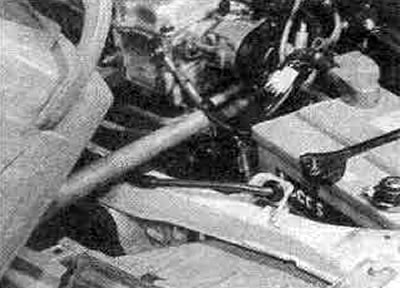2. Prepare the required amount of the specified refrigerant mixture, taking into account the reserve for topping up.
3. Fill the system slowly through the radiator filler, add into the expansion tank to the mark "Max", close the radiator and expansion tank caps (photo).

5.3 Filling the radiator with coolant

Fig.3.3 Checking the drive belt tension - all other models with power steering
4. Start the engine and warm it up to normal operating temperature. Watch the temperature gauge.
5. Stop the engine, allow it to cool completely, then remove the radiator cap and add coolant to the top of the filler. Install the radiator cap, fill the expansion tank to the mark "Max", install the filler plug, pointing the breather towards the wing.
6. After filling the system, always check all system components (connections broken during draining and flushing) to prevent refrigerant leaks.
Note: If, after draining the fluid and filling the system, there are signs of overheating that were not there before, the damage is most likely due to air trapped in the system (air lock restricts coolant flow); Usually air gets in because the system is filling too quickly. In some cases, air pockets can be released by loosening the seals on the various hoses. If the problem persists, stop the engine and allow it to cool completely, remove the coolant temperature sensor (carburetor models) or water temperature sensor (Turbo and 2.0 l models. with fuel injection) from the thermostat housing. Since this is the highest point in the system, it is possible to bleed air through the sensor hole.